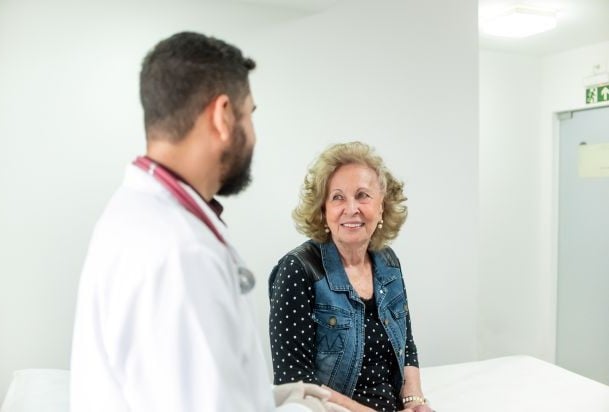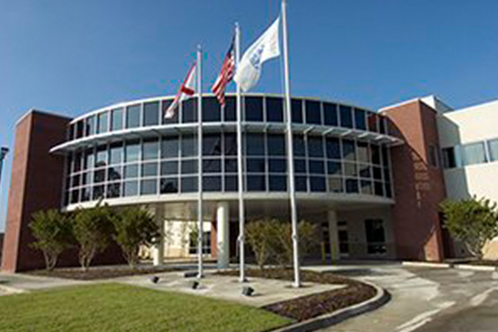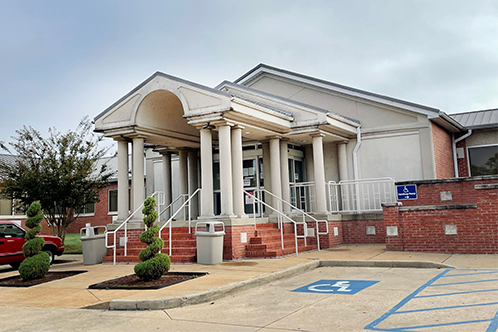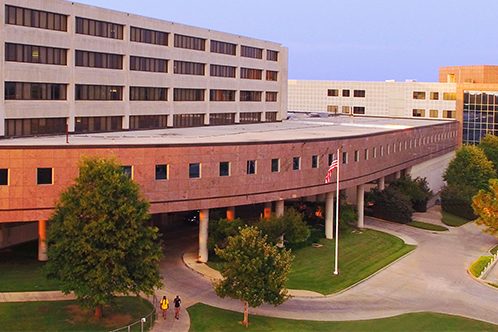- Medical Services
- Respiratory & Pulmonary Care
- Screening & Testing
- Lung Cancer Screening

Lung Cancer Screening
Current and former smokers may benefit from screening with low dose CT. Find out if you meet the guidelines.

Early Detection Saves Lives
When found early, lung cancer is treatable. Advances in surgery and radiation therapy have expanded the tools available for early stage treatment. According to the American Lung Association, lung cancer screening with annual low-dose CT scans for those at high risk can reduce the lung cancer death rate by up to 20%.
If you are a current smoker or have smoked in the last 15 years, you may be a candidate for lung cancer screening. Low-dose CT (LDCT) scans are now used at NMMC locations to screen for cancer. These scans use minimal amounts of radiation and can catch lung cancer in its earliest, most treatable stages.
Screening is recommended if:
You are 50 to 80 years of age (Medicare covers screening for patients age 50-77).
You currently smoke or or have quit within the past 15 years.
20+ pack-year smoking history
You have not had a chest CT scan in the last 12 months.
You are willing and physically able to undergo lung cancer treatment.
Talk to your primary care provider about lung cancer screening. Low dose CT is available at seven NMHS locations.
What is a Pack-Year?
The U.S. Preventive Services Task Force uses a 20 pack-year history as the benchmark to identify those who would benefit from screening.
Formula: Packs per day smoked x years smoked = pack-year
For example:
- 1 pack a day x 20 years = 20 pack-years
- 2 packs a day x 10 years = 20 pack-years
- ½ pack a day x 40 years = 20 pack-years
About LDCT Lung Screening
A CT scan uses X-rays to take multiple cross-section images of the body. A computer reassembles these images to create a 3-D view of the body. The CT scan provides your medical team more information than a simple chest X-ray and can identify possible tumors.
The low-dose CT uses less radiation than a regular CT to minimize the exposure for patients.
The LDCT lung screening is one of the easiest exams you can have. It takes just a few minutes, and, because contrast is not required, no medications are given or needles used. You can eat and drink before and after the test. You do not even have to change clothes as long as the clothing on your upper body does not contain any metal.
The CT machine is large with an open tunnel in the middle. During the test, you will need to lie on a table that moves through the tunnel. Pillows or straps may be used to support you during the test. You will have to be able to hold your breath for at least six seconds while the chest scan is taken.
Understanding My Results
The results of your LDCT scan are interpreted using the American College of Radiology’s Lung-RADS™ criteria.
These criteria recommend follow-up based on the results of the LDCT scan, and are broken down as follows:
- Category 1: negative
- Category 2: benign
- Category 3: probably benign
- Category 4: suspicious
Results that fall under Categories 1 and 2 typically require repeating your screening annually. However, if Category 3 or 4 findings are noted, additional testing may be required before your next annual screening to tell the difference between those nodules that are non-cancerous and those that could be cancer. The radiologist who reads your LDCT scan will recommend the appropriate follow-up in the written report that is sent to your health care provider.
Generally, about 25% of LDCT lung screenings will find something in the lung that may require additional evaluation and testing. Most of the time these findings are lung nodules, which are very small collections of tissue in the lungs. These nodules are quite common, and 97% of them are not cancer, but are normal lymph nodes or areas of scarring from past infections. Less commonly, these nodules are lung cancer.
However, if the lung cancer is found as a small nodule, the cancer can be cured 90% of the time. That is why LDCT screening is recommended for high-risk patients.
Sources: American Cancer Society, American College of Radiology, American Lung Association, National Cancer Institute, National Comprehensive Cancer Network
About Your LDCT Lung Cancer Screening
Related Locations
Related Resources
View AllIf you have any questions about lung cancer screening and whether it's right for you, talk to your primary care provider.




